-
Posts
6,486 -
Joined
-
Last visited
-
Days Won
9
Content Type
Profiles
Forums
Blogs
Gallery
Events
Store
Posts posted by Brian Wolfe
-
-
Nice bar indeed Nick. Not telling what you paid?

Sorry, my memory has frozen up, but is the Rising un in the correct position?
Regards
Brian
0 -
Very impressive work. Well done Larry and thanks for posting these.
Regards
Brian
0 -
Hello Paul,
I'd say the largest button photo show a button with the number 2 on it, this is off the top of my head but a quick internet check should confirm this (I hope).
So would this be the 2nd Regiment?
A nice find.
Regards
Brian
0 -
An interesdting post about an even more interesting man, Thanks for taking the time to post this Mervyn.
Regards
Brian
0 -
Perhaps it's where I am "shopping" but these seem to be a lot harder to find than either India or Pakistan; even more than one would expect give the number issued in India and Pakistan being taken into consideration.
Thanks to all who have contributed to this thread, it's starting to be become a great resource.
Regards
Brian
0 -
I would agree that this in one of the nicest Masonic jewels I've seen.
Thnaks for posting this Mervyn.
Regards
Brian
0 -
This plus drones maks the computer nerds the kings of the battlefield.
Regards
Brian
0 -
Thanks for reviving this post Mervyn.
I think the photos would have been very interesting, however, like most members, it seems, I missed this when it was first posted in 2012.
Regards
Brian
0 -
Well done Timo.
Good luck on the research, I wish I could help.
Regards
Brian
0 -
I am in disagreement regarding the idea that every helmet is a sacred artifact and not to be altered in any way. This is not a case where the helmet or other artifact has become just another piece in an abstract sculpture or been cleverly transformed into a clock or a bird house for a cowbird. These are fitting memorials to those who served and often gave their lives for their country. The only example of Steves work that I own, which I won here on the GMIC, holds a special place in the study within my British musket collection closet. I have received more positive comments on this piece than on anything else in the collections.
This is art of the calibre that could and should be in any collection of war art whether it is in a private collection, such as mine, or in a museum where the public can not only marvel at the skill of the artist but also reflect on the deeds of those the piece commemorates.
To refresh the members memories of the helmet Steve so graciously donated for the competition here are the details of the soldier commemorated in the winning of the Victoria Cross in Libya, 5 June, 1942.
4458 Sergeant Quentin George Murray Smythe, 1st Battalion, Royal Natal Carabineers, 1st SA Infantry Division, South African Forces.
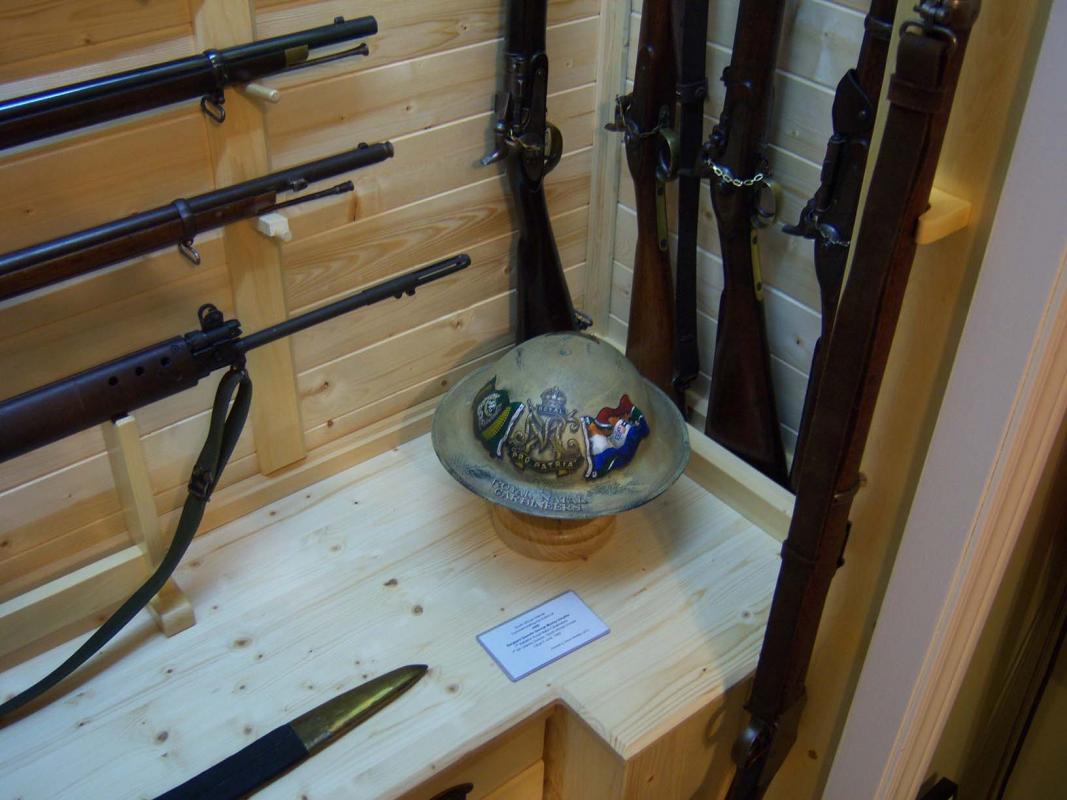
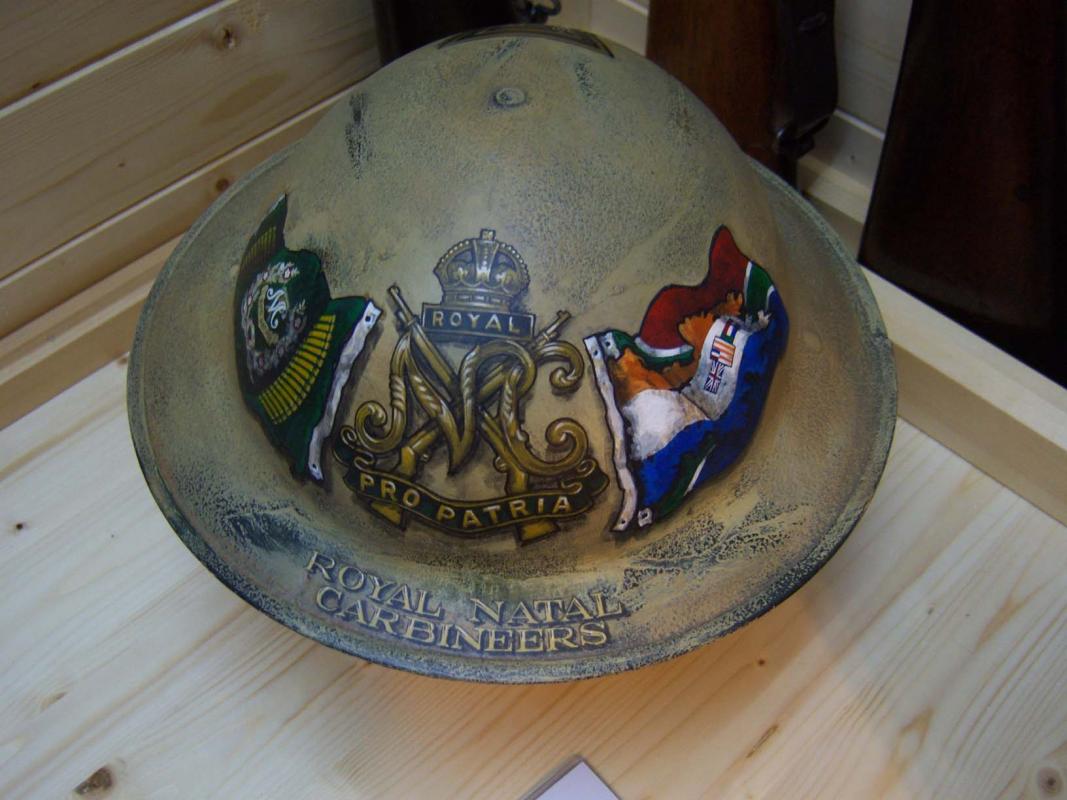
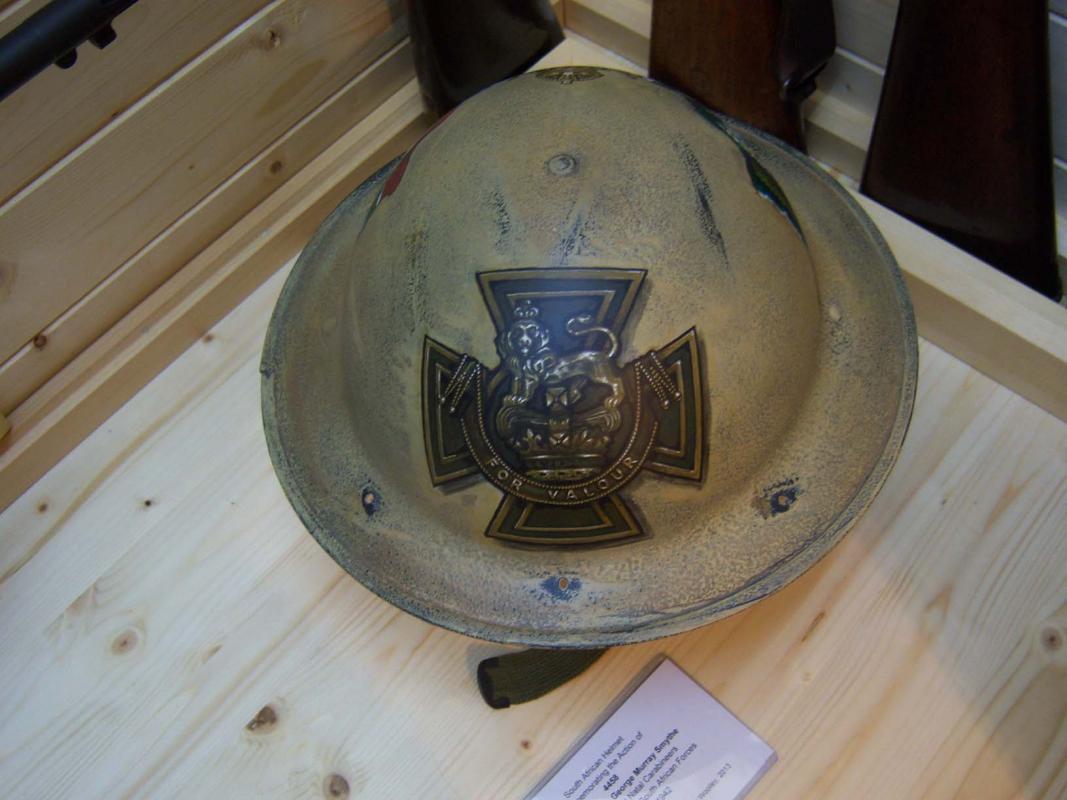
Steves dedicated work and extraordinary talent honours the men and women of all branches of the military and conflicts regardless of their nationality.
Everyone is entitled to their opinion and there is always merit in any opinion, this is mine.
Regards
Brian
0 -
Beautiful work as always Steve.
Thanks for sharing this with the membership.
Regards
Brian
0 -
The knife shown in 2007 by Greg is indeed probably made by the Case Cutlery Company of Bradford, Colorado and was a second variation in that the Collins made V-44 had a black moulded synthetic grip; Collins Company was situated in Hartford, Connectict.. Another manufacturer of this knife was, Western Cutlery of Boulder Colorado.
I seem to recall that Case is still making these, (or at least was several years ago), to the exact specifications as those made during the Second World War, which would account for the "new" look of the piece presented in the post.
Canada's weapon of choice for use in crimes has statistically been the knife, though sadly were are starting to see an increase in crimes involving firearms. I say that this is sad because the use of a blade seldom causes collatoral damage.
Regards
Brian
0 -
It is hard to tell from the photos but here's my thoughts.
I like the nakago (tang) in that it shows rust, which is what you want. What I don't like is that this looks like it could have been cleaned at some time as the rust is not an even coating. I would also have liked to have seen file marks on the tang as these were always left and can tell a lot about the maker. Maker's names, while not always present, would have been a good thing to have seen on the nakago.
The handle looks correct to the WWII Army standards except that the scabbard sleeve above the tsuba (guard) called the habaki has a decorative design which would not usually be found on a military issue as these are left plain. While the handle "looks" period correct to the WWII period I feel it is a little too clean to have been made/used/carried some 70+ years ago.
The photos don't show the hamon (temper line) well enough however, it would appear to be straight and not wavy. This is not necessarily a sign that the blade was machine made as I have a nice example of a wahisazhi with a straight hamon that was hand made in the early 1930s. If the hamon is not there and the line of the hamon that I am seeing in the photo is actually caused by the shape of the blade then it was not hand made.
The saya (scabbard) is too long for the blade. This would not be a bad thing if the saya was a shin-gunto (army pattern) as the saya was always regulation length even if a shorter "ancestoral, or family" wawakizashi was being carried. This scabbard is a storage scabbard and not meant for use in the field and would, I suspect, be the correct length for the blade.
Over all this sword just looks to good to be authentic. None of the finish on any part of the wakizashi is worn or damaged, as I would expect to see in a sword that has been around for three quarters of a century. In my view I would thik this could very well be a modern Chineese copy, a very good one but a copy all the same.
Please bear in mind that this is just my opinion based on photos that are not as clear as I would like and the final decision, as always, is yours to make.
Even if this is an authentic sword I don't offer valuations, but if I saw this on a dealer's table my impulse would be to value it as a "Leaverite" (leave her right there) and walk away.
I will be interested to read other opinions and please let us know what you find out and your final decision.
Regards
Brian
0 -
The next lamp featured to this post is a bit of a mystery to me. The top has a trade mark “HW” and no other indication of its origin. The dimensions are 3 ¾ inches tall, 1½ thick (body only) and 2 5/8 inches wide. The lens is of the fisheye style common with earlier lamps. I have included this light in the police category as it has the carrying handle and a device on the back that could hook over a belt or perhaps even allow the light to be suspended from a button on a tunic.
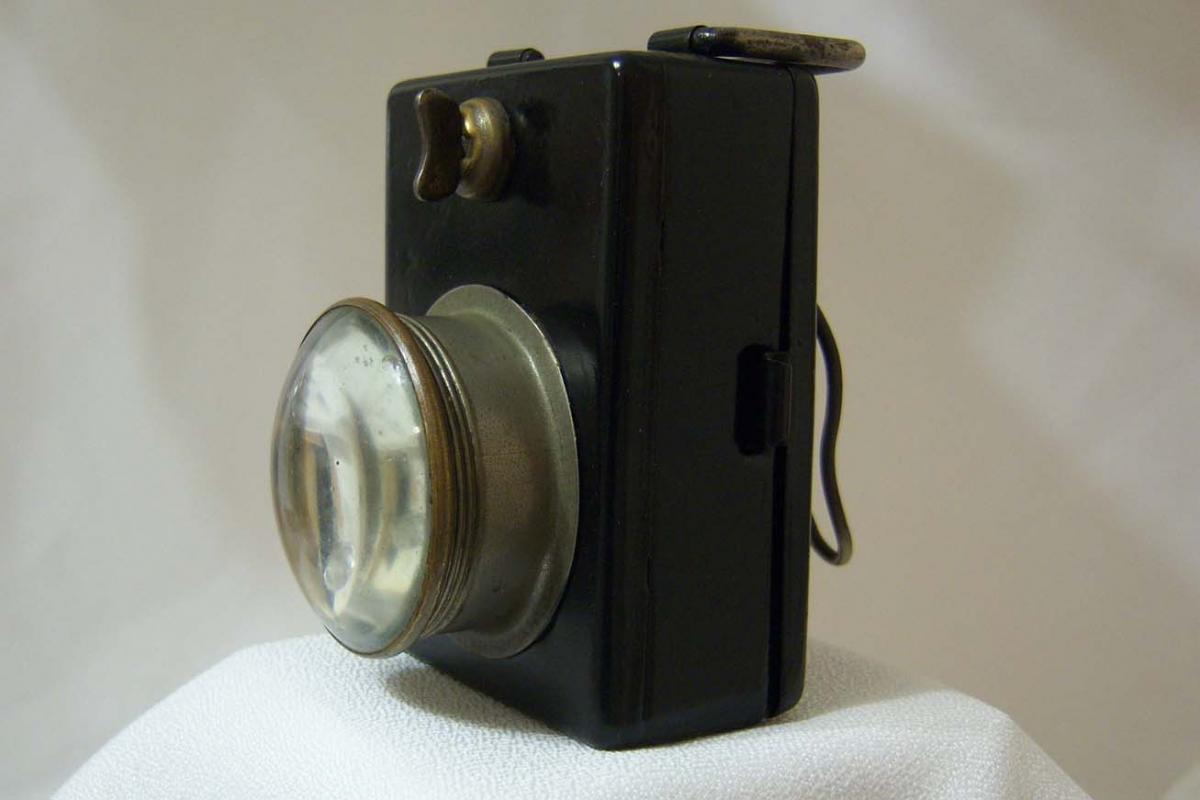
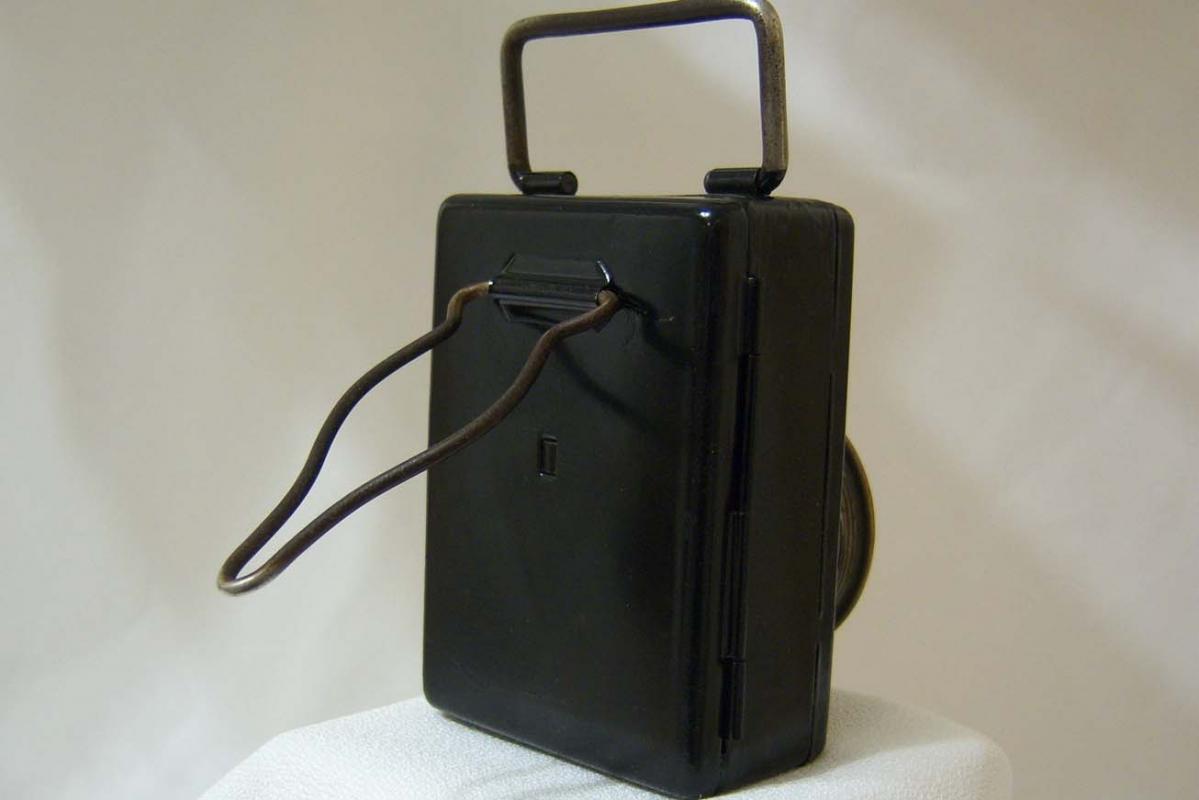
The light is turned on and off by a switch on the front over the lens. Looking at the inside of the lamp it would appear that the battery was a rectangular shape with one pole connected in the middle front and the other pole connected to complete the circuit in the upper left hand corner (see photo to the left below). In this photo you can see the switch at the top in the “off” position. In the right hand photo you can see the switch in the “on” position.

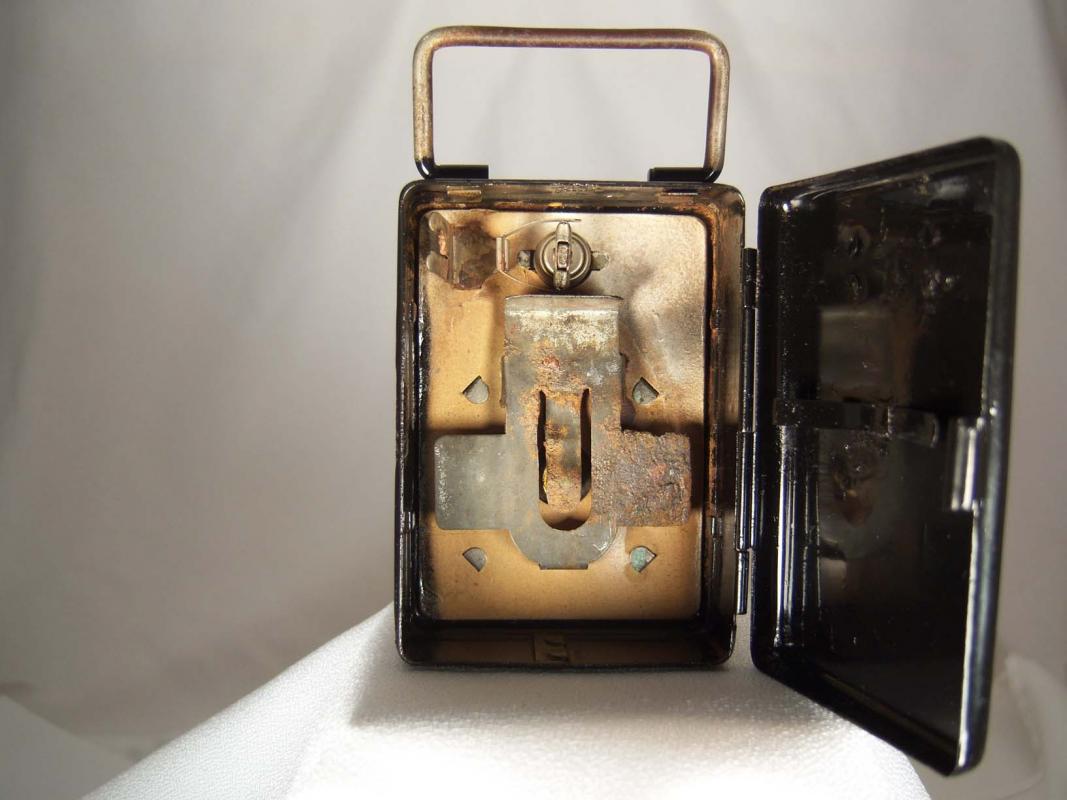
At times it is difficult to date lamps to specific time periods due to lack of information stamped on the lamp. However in this case I found this exact lamp advertised in a German catalogue dated 1919. By this I would assume these first came available near the end of the First World War. This being included in a German catalogue may indicate that it is German rather than British, however I cannot say either way with any confidence.
When this lamp came into my possession it was in deplorable condition and required significant restoration. I usually leave items that become part of the collection much like they were found but in this case restoration was a necessity.
Regards
Brian
0 -
Amazing work and very well displayed.
Thanks for sharing them with us.
Regards,
Brian
0 -
Well done Robin and well worth the wait.
Congratulations.
Regards
Brian
0 -
Hi Rich,
Thanks for sharing this interesting specimen. A person could easily get involved in colecting sake cups with a passion, so many diferent and interesting designs.
Regards
Brian
0 -
Thanks Mervyn, now I'll start to do some digging around in the study to see what I have hidden and not posted yet.
Regards
Brian
0 -
Another interesting post Mervyn; thanks for the information and sharing the photo with us.
I'm sure several of us will be waiting to add these our collections by way of the Sales Forum.
Regards
Brian
0 -
Hi Jock,
You've done a nice job and undone an error in judgement by a past owner.
I agree with Chris, the saw teeth were removed later in the war from all German bayonets.
Regards
Brian
0 -
Thank you for an interesting and informative article Mervyn.
Regards
Brian
0 -
Hi Mervyn,
Looks like an interesting book, I do believe I will order one.
Regards
Brian
0 -
Well done Rob.
How was the rest of the show?
Regards
Brian
0 -
Thanks Rich, I'll do a search for one. I would think anything, such as the one you mentioned, that was post WWII would be more helpful than the one I have ordered.
Regards
Brian
0




1914 Star Mons Star to Pte. C Simpson, Bugler 1/KRRC POW Nov 14
in Great Britain: Orders, Gallantry, Campaign Medals
Posted
An interesting and very complete history.
Thanks for posting this, Tony.
Regards
Brian